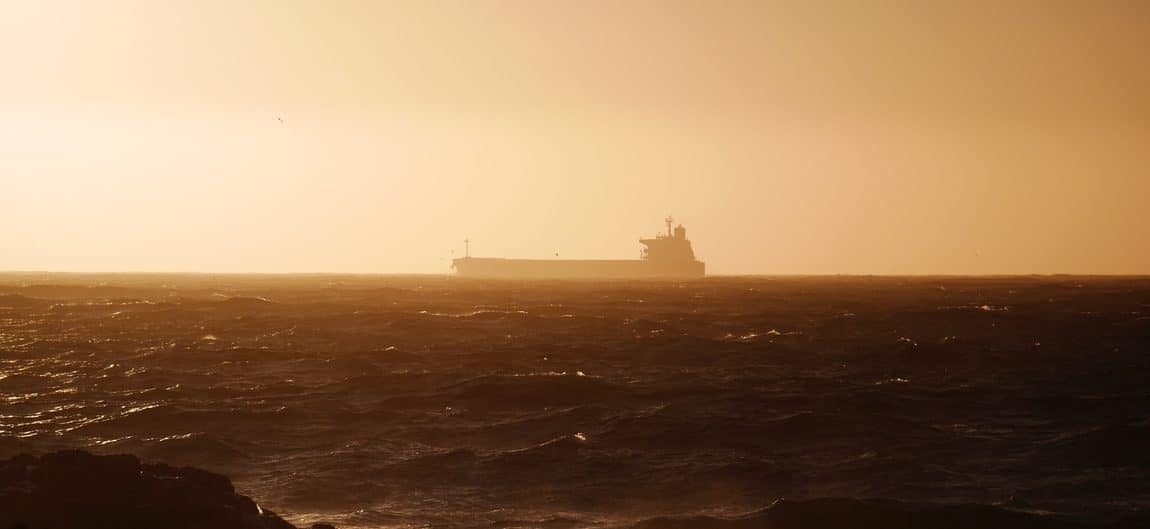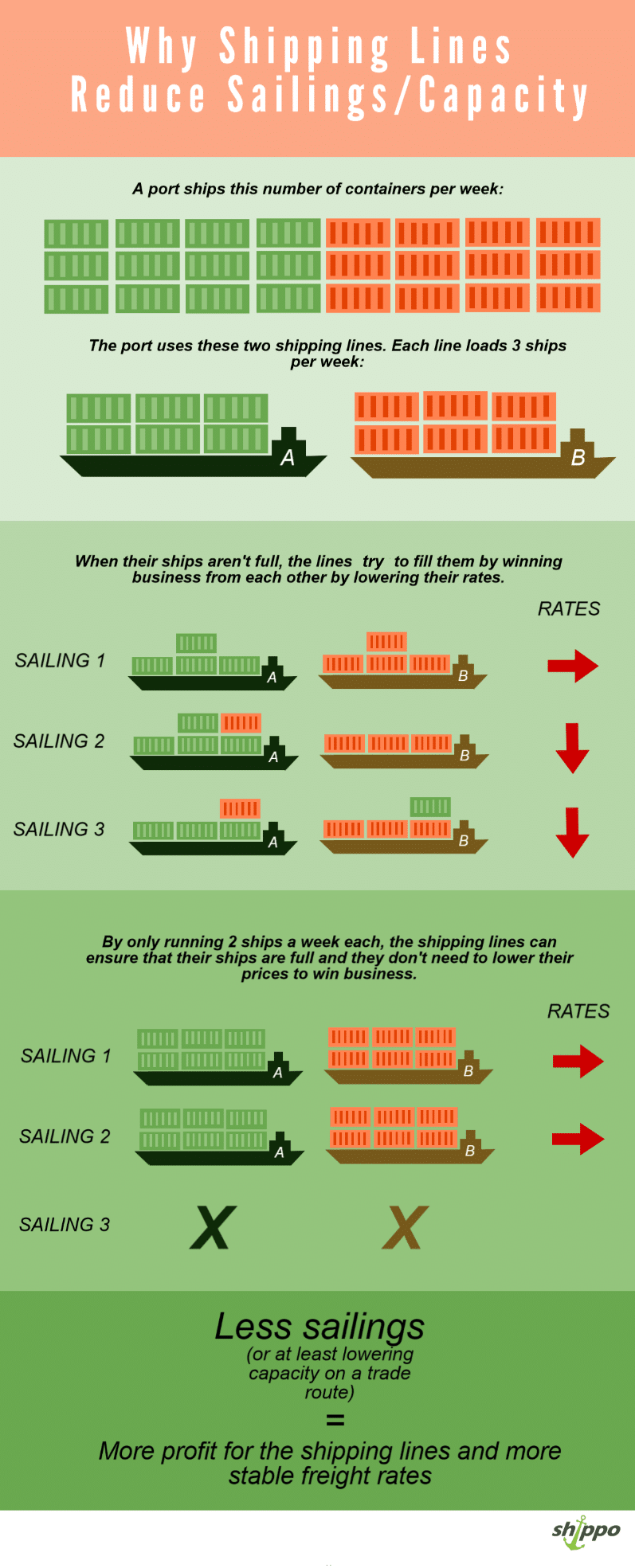The war against uncertainty
Over the past few years, anyone importing goods from China to the UK in full container loads has had a tough time when planning ahead. The reason for this? Rate fluctuations!
There have been times where the cost to ship a container from China to the UK has been US$650 (for the freight itself) and that same container shipped the next day has cost more than $1600. Not everyone buying goods from China can just absorb or pass on a 150% increase like that overnight. These yo-yo shipping rates with continual peaks and troughs have plagued importers for some time now but this may be about to end.
What’s been done about it?
Shipping lines have cut the amount of capacity sailing from Asia to the UK by a third. This will allow them to keep their prices from tumbling as has been seen over recent years. In doing so they are addressing the huge amount of unused space on each sailing (explained in the graphic). Their efforts seem to be working as they have been successful in keeping their rates at a relatively high level.
In recent years, after the chaos of Chinese New Year has subsided, the rates have dropped pretty steadily due to more space on ships than containers to fill it. Since late 2016, freight rates have been around 125% higher than they were a year ago for shipping on routes from Asia to Europe.
What is ‘capacity’ and how do shipping lines cut it?
Capacity is effectively how many containers a shipping line could carry (in theory) in any particular period of time. If a shipping line uses container ships that carry 15,000 TEU (Twenty-Foot Equivalent Unit – the equivalent of a 20ft container, i.e. 2 TEU = 2x20ft containers or 1x40ft container) and they ship 3 times a week on a particular route then their capacity on that route would be 45,000 TEU per week.
The shipping lines can cut capacity in two main ways:
- They can remove vessels from service on the route in question or using smaller vessels on that route. If they cut sailings from three times a week to twice a week then the capacity in the above example would be reduced from 45,000 TEU per week to 30,000 TEU per week.
- They can also keep to three sailings a week but instead of using vessels that carry 15,000 TEU they used vessels that could carry 10,000 TEU then that would also reduce the capacity to 30,000 TEU per week.
Why do shipping lines cut capacity?
Shipping lines, all operating vessels that are half-empty, have been fighting rate wars to win business from each other. This drives the rates down to the floor before the very same lines have to artificially increase them again with GRIs (General Rate Increases). These artificially enforced GRIs don’t allow normal market forces to determine prices, as they do for products and services around the world. When supply outstrips demand, the rates should drop, and when demand outstrips demand, the rates should rise.
It seems that the shipping lines have decided to rectify this and work with more traditional market forces. Forces that don’t prick the ears of the European Commission and the guardians of their antitrust rules (https://www.shippo.co.uk/news/shipping-lines-face-eu-antitrust-proceedings/)!
Current Rates
Since Chinese New Year and the occurrence of the new Coronavirus, shipping lines on the Asia to Europe route have decreased the capacity of vessels by around 30% due to a huge slump in demand – this has increased the rates as the goods that missed sailings before CNY struggle to find space. It is predicted for this to extend until at least mid-April.
Shipping lines have removed port calls and withdrawn vessels to keep the rates stable as they are looking to increase their rates with the need for space.
If you want to know more about shipping costs and rate fluctuations please feel free to contact us at any time.
Don’t forget to follow and share!

